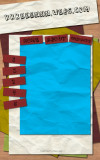I made a design for my first web page, and I tried to do the codes but sadly I can't. Can someone tell me where to code the codes needed, if it will be on html or css. Because I can't arrange the images I wanted them to be.
I had read some tutorials about html and css.

